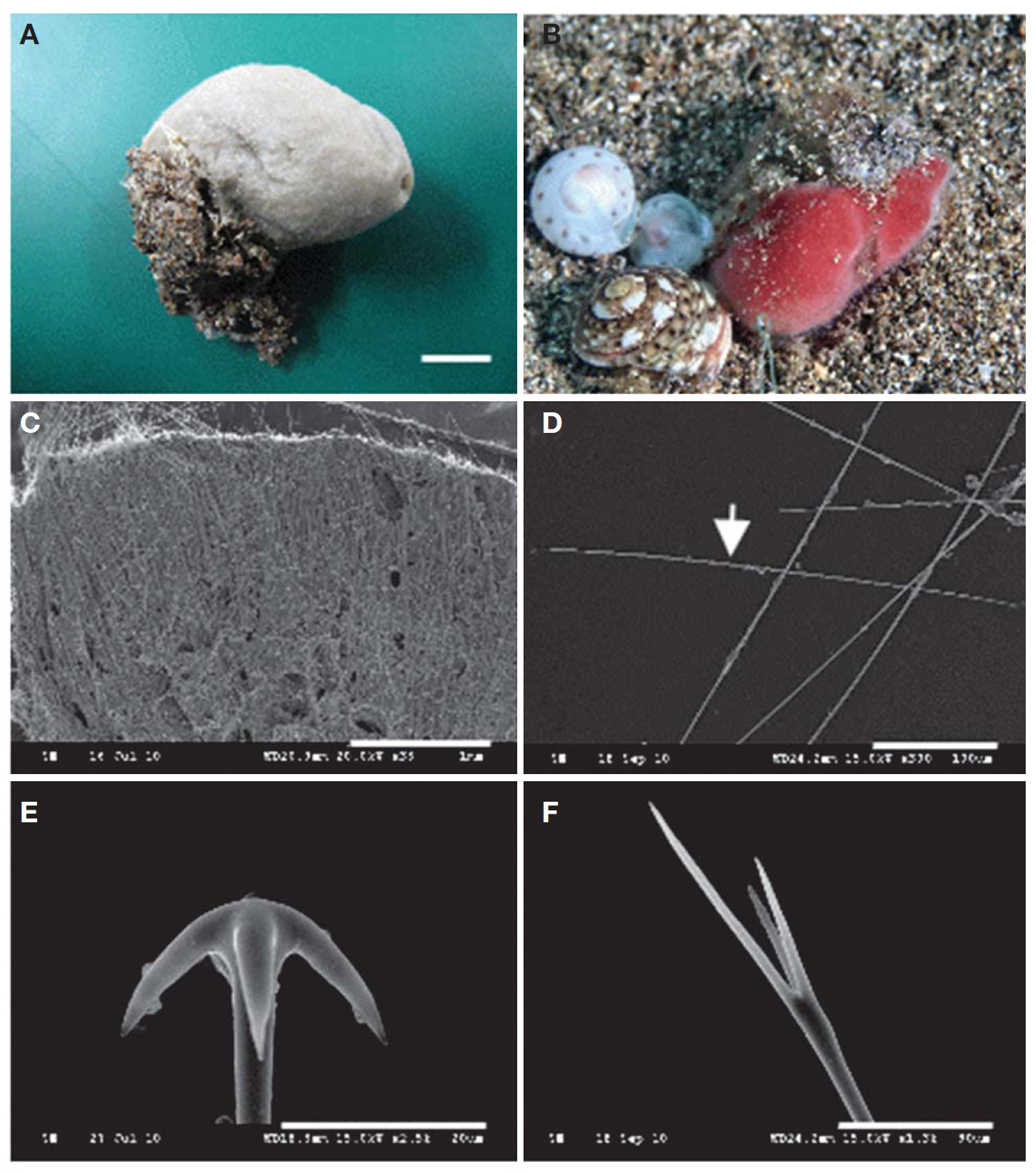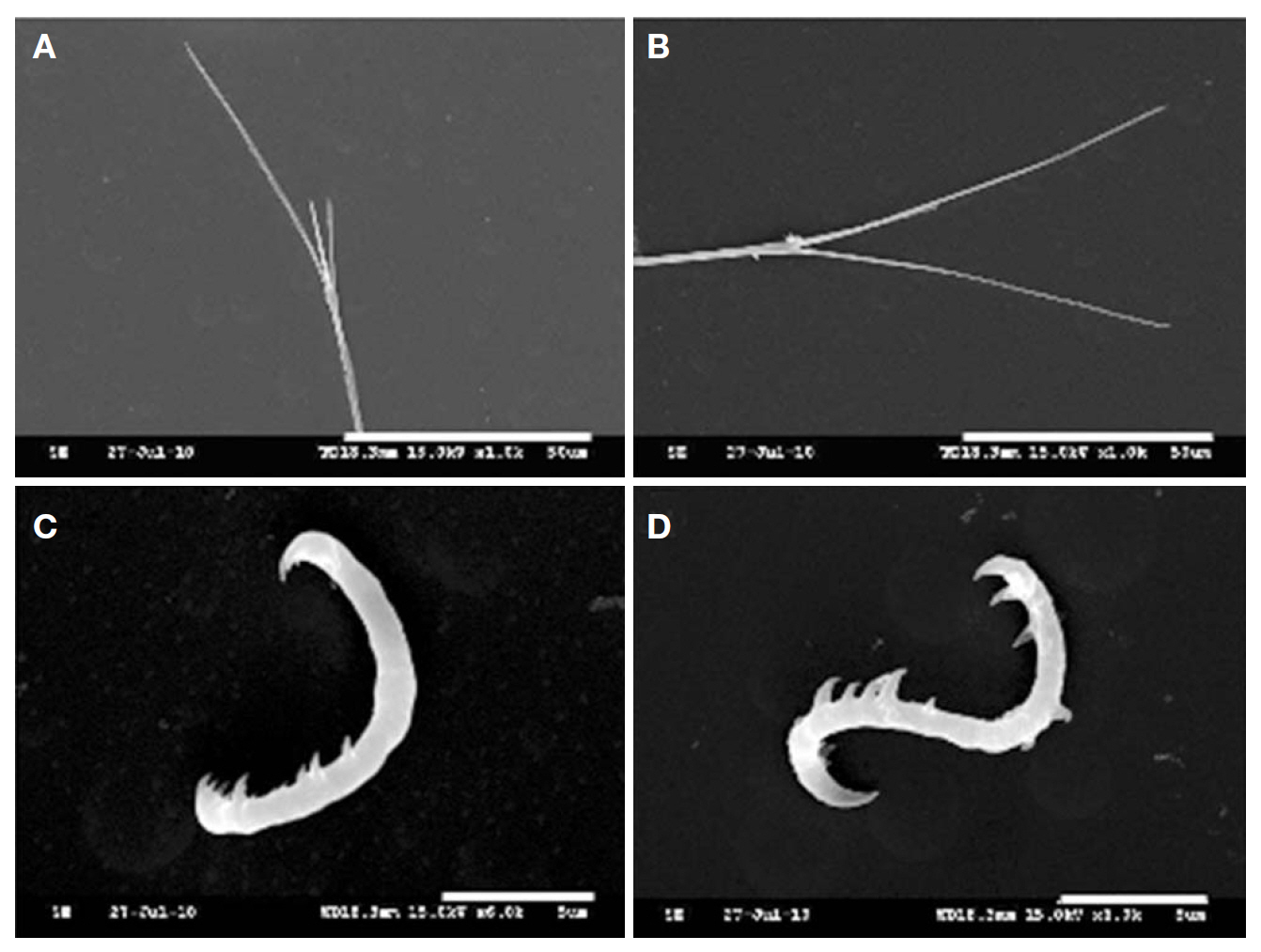



The genus
Phylum Porifera Grant, 1836
Class Demospongiae Sollas, 1885
Subclass Tetractinomorpha Levi, 1953
Order Spirophorida Bergquist and Hogg, 1969
Family Tetillidae Sollas, 1886
1*
Holotype (Por. 104), Hwasun Harbor, Jejudo Island, 2 Sep 2009, Kim SH, by SCUBA diving, at 5 m in depth, HUNHM. Paratype (Por. 104-1), collected with Holotype, HUNHM.
Globular shape with one root-like base consisting of spicules and sand, size up to 4.3×3.5×1 cm. A single oscule 5 mm in diameter, opened at center of body. Colour pink in life, beige in ethanol. Texture very compressible. Surface of body even and smooth. Skeletal structure showing radial arrangement without distinct cortex. Bundles of oxeas run from basement to the surface. Surface region densely packed with oxeas and small protriaenes in fence-like structure. Lower part of body with less spongin. Root in base with dense anatriaenes and large protriaenes mixed with sand.
Spicules. Oxeas straight or slightly curved. Anatriaenes very long and curved at tip. Protriaenes long and thin, it’s clad unequally long. Sigmaspires with fine spines.
Megascleres (㎛).
Large ??????????????????????????????????????????????1,180-1,830×8-10
Small oxeas?????????????????????????????????????????????600-950×4-6
Anatriaenes?????????????????????????????rhabds 1,940-4,500×2-5
clads 15-40
Large protriaenes?????????????????????rhabds 1,800-2,050×4-7
clads 35-60
Small protriaenes ??????????????????????????rhabds 250-660×1-2
clads 75-100
Microscleres (μm).
Sigmaspires?????????????????????????????????????????????????????????10-15
The species is named after the type locality, Hwasun Harbor, Jejudo Island.
the new species has an even surface.
Korean name: 1*화순유두해면 (신칭)

